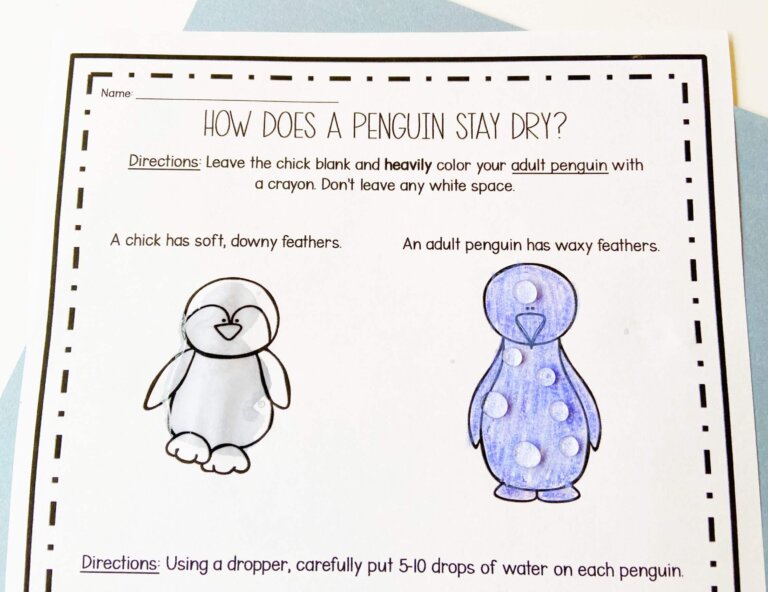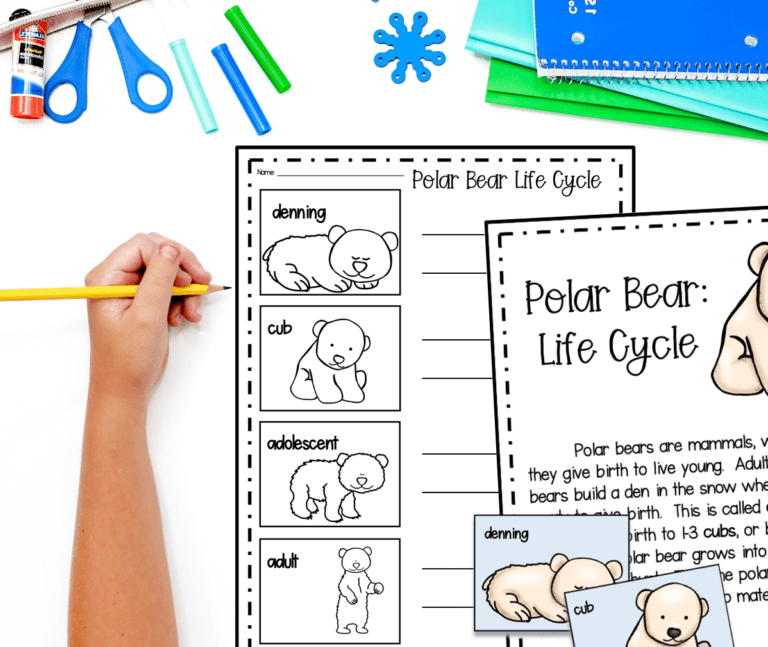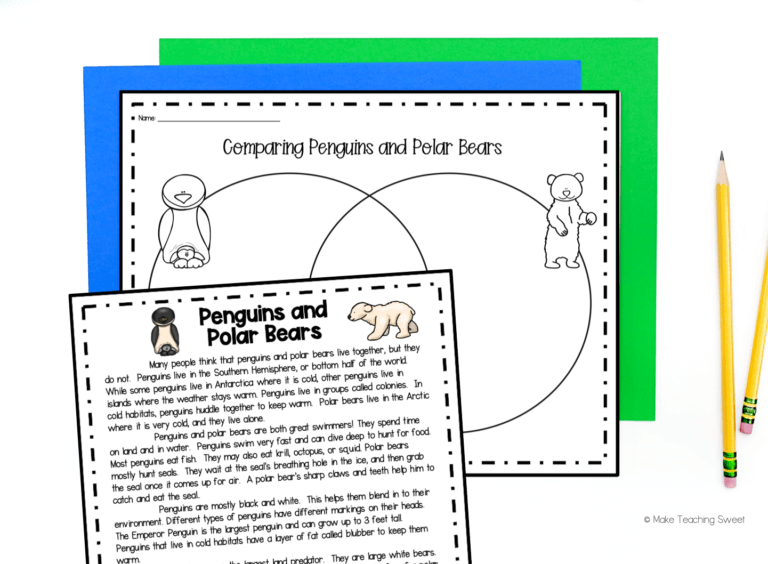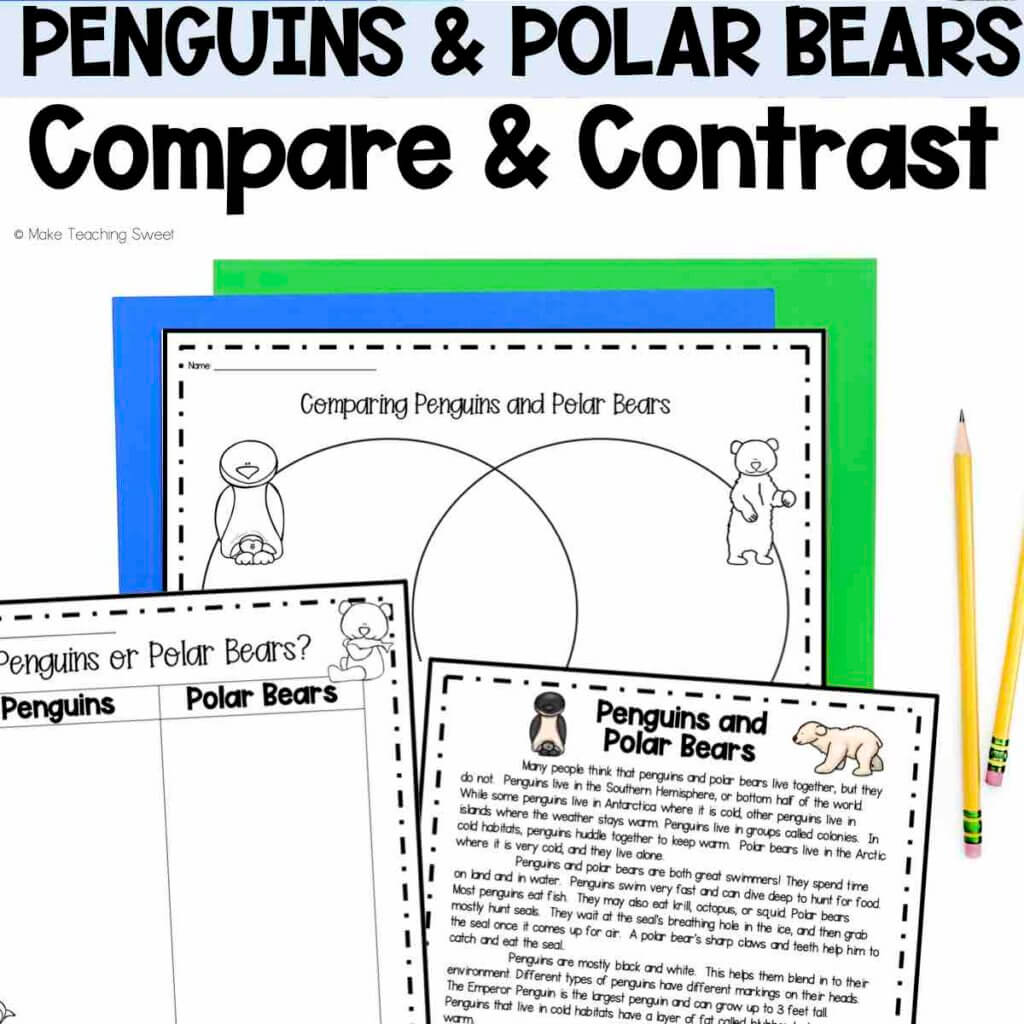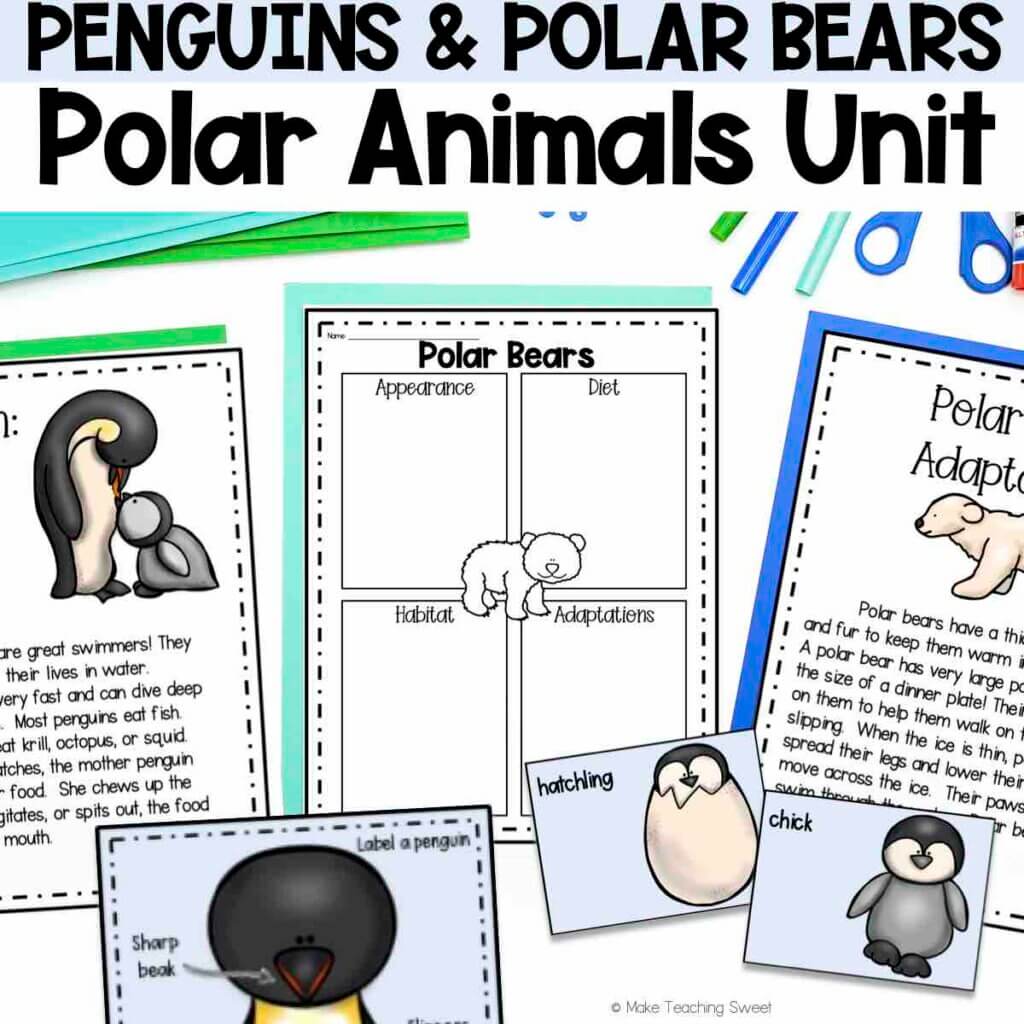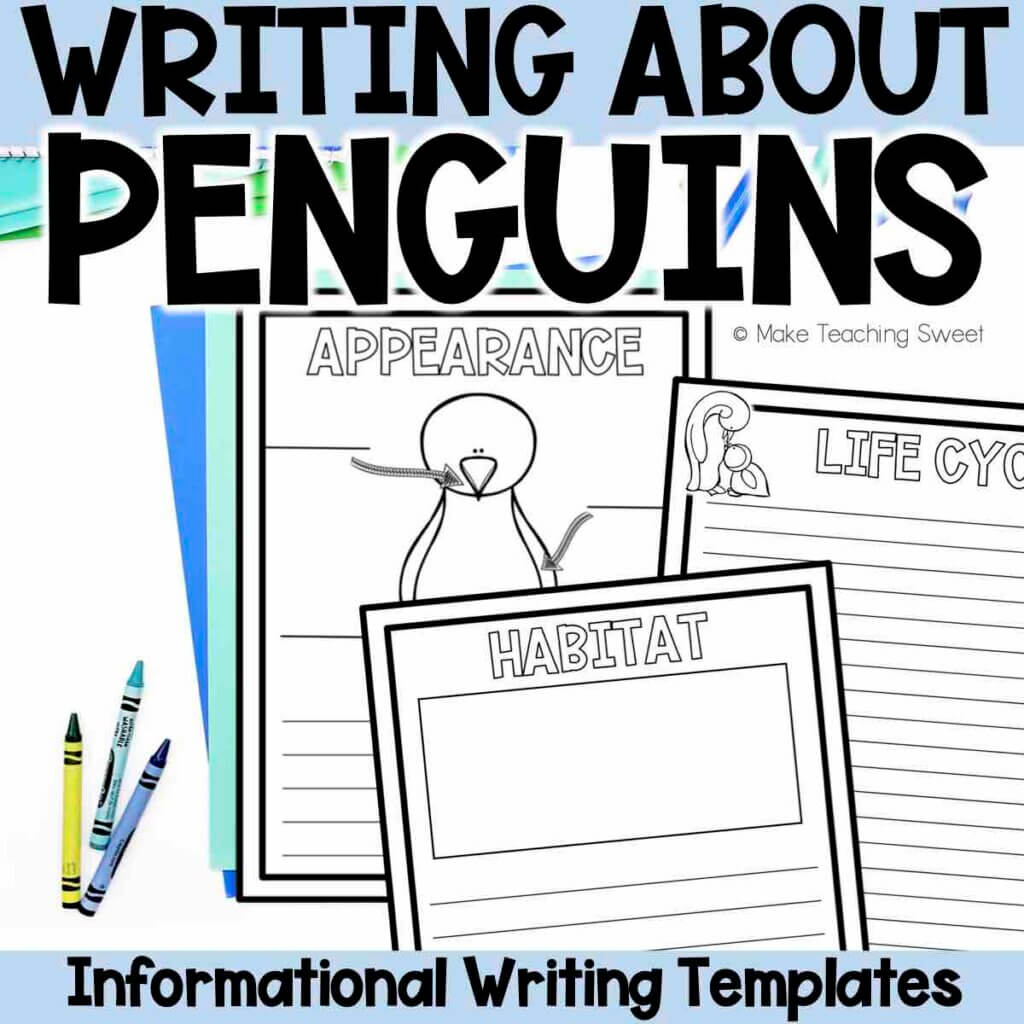Using Polar Animals to Teach Science, Reading, & Writing
Are animals part of your science curriculum?
I love teaching about animals and usually do a big animals unit in the spring (the perfect time to talk about life cycles). It’s so hard to find time to do in depth research on so many animals because it’s SUCH a broad topic.
So I teach a 2 week Polar Animals unit in the winter to go in depth on the diet, appearance, habitat, & adaptations of penguins and polar bears. It is such a fun unit to teach and is a great introduction to vocabulary for the animals unit later in the spring.
I created a Penguins & Polar Bears unit filled with nonfiction texts, graphic organizers, science explorations, & more.
The Power of Integration
In early childhood classrooms, the most powerful tool we have for student engagement is integration. Integration means you are teaching multiple subject and content areas simultaneously- often in the same activity. This makes content fun and meaningful to students because they see how what they are learning relates to other content.
Integration also makes teaching SO much fun – you can lean into the theme across your science, reading, and writing blocks. It makes planning a breeze because you plan one unit and have content for 3 subject areas. Anything that saves me time is a winner!
How to Integrate
If your science, reading, and writing times are one big block, you can simply use this whole time to work on various parts of your unit. If your day is broken up like mine with lunch and related arts times, you can focus on the content area while connecting it to other parts of the day – all while learning more about polar animals.
During science we dive into our science standards about life cycles and animal adaptations. In reading we research, read nonfiction texts, about penguins and work on nonfiction text features. In writing students work on publishing their own informational books about penguins – they are so engaged in writing because they have learned SO much!! Such a win!
Your standards and grade level will guide your specific content, but the overall framework can work for any grade level.
Take a look at some of the skills I teach with my penguins & polar bears unit:
Science Skills
- Learning science vocabulary: diet, adaptation, habitat, appearance, life cycle
- Comparing & contrasting life cycles (penguins hatch from egg, polar bears born live)
- Sequencing life cycles
- Hands-on science explorations – learning about adaptations that keep penguins & polar bears dry and warm
- Parts of the world – learning that penguins and polar bears live on different hemispheres
- Food chains
Reading Skills
- Difference between fiction and nonfiction texts
- Author’s Purpose to inform
- Nonfiction text features – title, heading, diagrams, captions, maps, etc.
- Answering questions about a text
- Main idea & details
- Compare and contrast 2 topics
- Compare and contrast 2 texts
- Text structure
- Sequencing life cycles after reading a text
- Vocabulary
My polar animals unit is also filled with 13 different nonfiction text passages, graphic organizers, and more
I also have a nonfiction text passage with a Venn Diagram and sorting activity to check for understanding. A perfect start to planning your unit.
Writing Skills
Having students publish an informational book about penguins is my favorite thing we do in writing. I use these writing templates – students can choose which headings they need based on their research and what they’d like to focus on. It is easy to differentiate because beginning writers can write a few sentences about 1-2 topics, while advanced writers will write paragraphs about several topics. Students can work at their own pace and I encourage them to add text features to their writing.
They are always SO proud of their work so I bind them and we have fun sharing our research with each other. These books would be perfect to share at an Author’s Tea!
Ready to try it?
I hope this inspired you to try integration. You’ll love how simple it will make your unit to plan, and your students will love how fun and engaging the content is. I would love to hear how it goes in your classroom!
If you love the idea of using polar animals to integrate but don’t have the time to plan it, let me help! I have a ready-to-use unit and no-prep writing templates. Saving you time is my mission!

